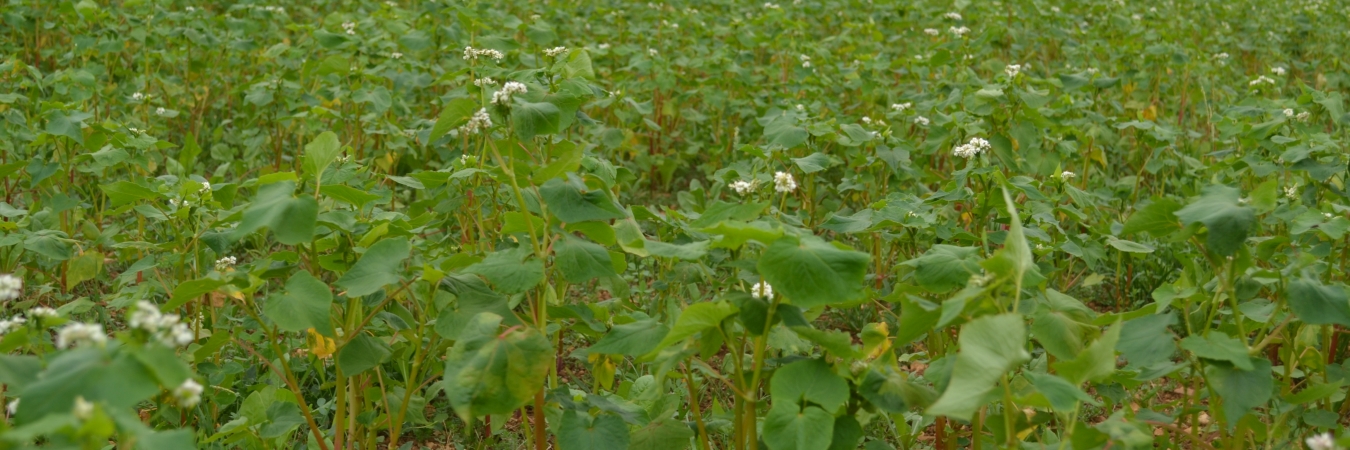Cover crop mixtures increase agroecosystem services
Planting a multi-species mixture of cover crops – rather than a cover crop monoculture – between cash crops, provides increased agroecosystem services, or multifunctionality, according to researchers in Penn State’s College of Agricultural Sciences.
That was the conclusion drawn from a two-year study of 18 cover-crop treatments, ranging in diversity from one to eight plant species. Cover crops were grown at the Penn State Russell E. Larson Agricultural Research Center preceding a corn crop. The researchers measured five benefits provided by cover crops – ecosystem services – in each cover crop system to assess the relationship between species.
Those services included weed suppression and nitrogen retention during the cover-crop season, cover-crop aboveground biomass, inorganic nitrogen supply during the subsequent cash-crop season and subsequent corn yield.
The study was the first field-based test of the relationship between cover-crop species and multifunctionality – the quality of cover crops to simultaneously provide multiple benefits – noted research team member Jason Kaye, professor of soil biogeochemistry. Never before had this relationship been examined and analyzed in a crop rotation.
As continued research yields more precise information about optimal cover-crop seed mixtures and planting rates, Kaye predicted, farmers will deploy this strategy to enhance soil quality, control weed growth, manage critical nutrients such as nitrogen, improve crop yields and reduce nutrient runoff.
“This kind of ecological study identifying a positive relationship between biodiversity and ecosystem services suggests that higher plant diversity will increase services from agroecosystems, and that has immediate implications for management practices and policies for sustainable agriculture, including Chesapeake Bay water quality,” Kaye said. “In a corn production system, simply increasing cover-crop species richness will have a small impact on agroecosystem services, but designing mixtures that maximize functional diversity may lead to agroecosystems with greater multifunctionality.”
Cover-crop species grown in monocultures and in mixtures during the study included oats, canola, sunn hemp, soybean, barley, perennial ryegrass, forage radish, cereal rye, millet, sudangrass, red clover and hairy vetch.
The research, which is published in the September issue of the Journal of Applied Ecology, shows that designing cover-crop mixes will involve trade-offs to achieve desired levels of ecosystem services, explained lead researcher Denise Finney, now an assistant professor of biology at Ursinus College, in Collegeville, Pennsylvania. She conducted the Penn State study while pursuing her doctoral degree, advised by Kaye.
“For example, nitrogen cycling is an area where trade-offs can occur among services,” she said. “In our research, we have found that cover-crop mixtures that excel at nitrogen retention can decrease soil nitrogen supply to cash crops and limit their yield. However, bi-cultures — correctly formulated to combine legume and nonlegume species — can both supply inorganic nitrogen and retain nitrogen.”
Finney said the researchers aimed to address two critical questions related to cover crops and multifunctionality: Does including more species in a cover crop system lead to greater multifunctionality? And are there guiding principles for cover-crop mixture assembly that will lead to increases in net multifunctionality? Cross-disciplinary, follow-on studies planned and underway on Pennsylvania and New York farms, led by Kaye, are intended to build on the knowledge gained through this study.
The ultimate goal is to provide the agriculture industry with evidence-based information that will help farmers to design cover-crop mixtures that provide desired services using species combinations that augment biodiversity while minimizing economic or management constraints, Finney explained. Increasing ecosystem-service provision from agroecosystems is an emerging goal of contemporary agriculture.
“Exploiting biodiversity to meet this goal is a promising approach,” she said. “However, considerable research is needed to identify the functional traits that shape cover-crop community dynamics and to depict trade-offs among services in multifunctionality metrics.”
Read full article